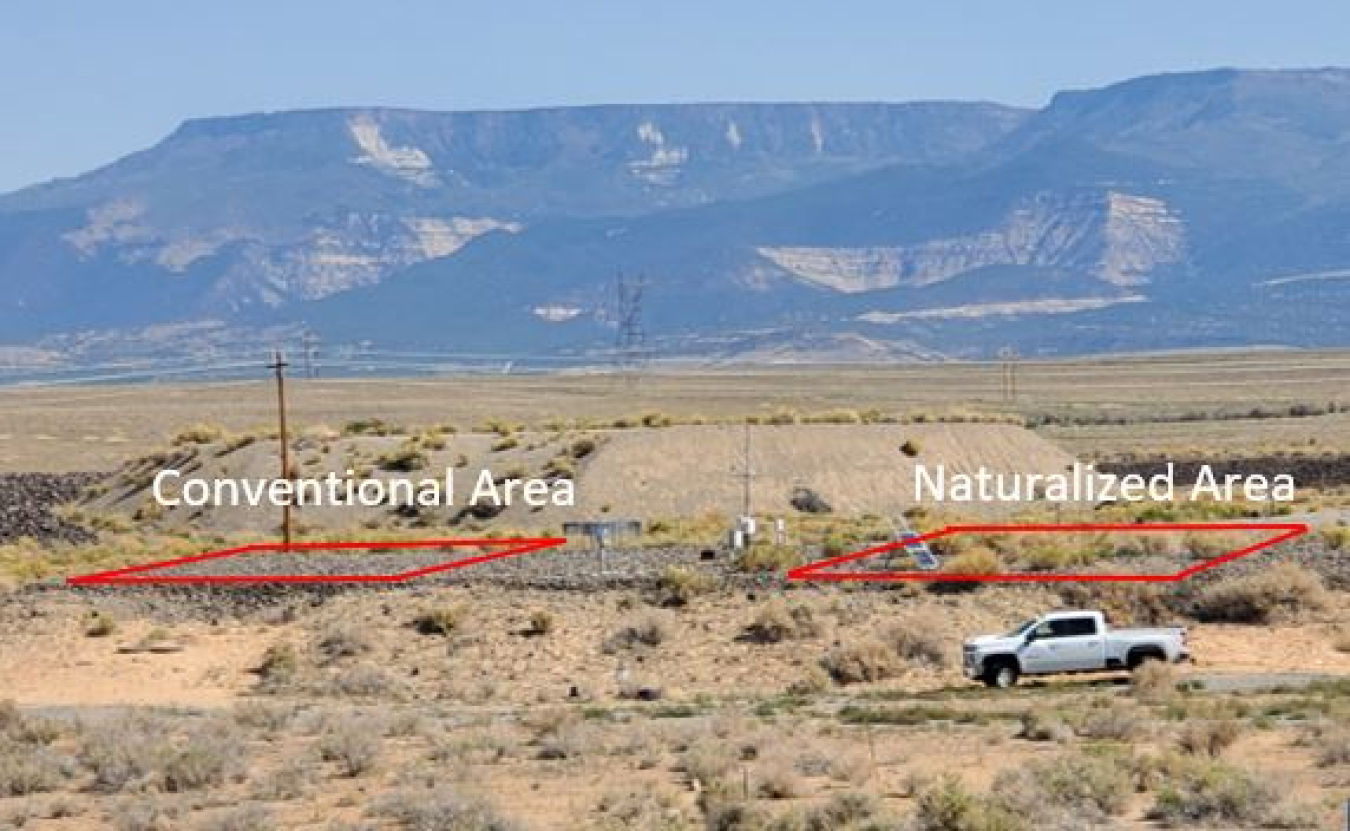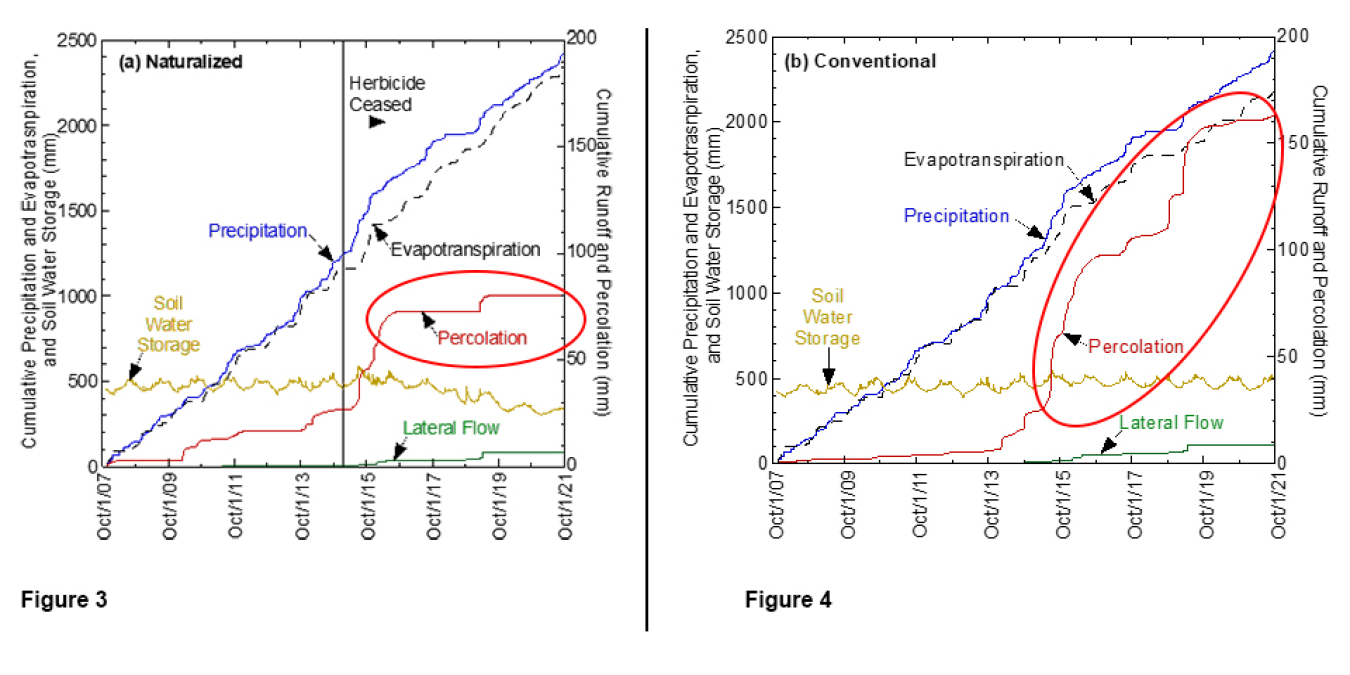LM conducts studies to evaluate pros and cons of managing disposal cell covers with and without vegetation.
December 14, 2022One of the U.S. Department of Energy Office of Legacy Management (LM) Applied Studies and Technology program’s (AS&T) focus areas is the effect of natural processes on remedy protectiveness. AS&T has a portfolio of studies that focus on enhancing LM’s understanding of long-term processes that affect disposal cell performance.
According to LM’s Real Property Team, LM manages 30 sites with disposal cells, including one site that has two disposal cells (Bluewater in New Mexico) for a total of 31 disposal cells. LM also has six additional sites that have what are defined as either impoundments or landfills.
Therefore, it behooves LM to understand the long-term processes that affect performance of disposal cells and engineered cover systems that ensure long-term remedy protectiveness for human health and the environment.
AS&T’s Enhanced Cover Assessment Project (ECAP) examines vegetation impacts on rock-covered disposal cell performance. The project includes several studies that evaluate the pros and cons of managing disposal cell covers that have and don’t have vegetation.

Figure 1. The Grand Junction disposal site study area in September 2022. Note the bare rock cover on the conventional area and the vegetation established on the naturalized area.
In one study, the team constructed a scaled-down replica of the Grand Junction, Colorado, Disposal/Processing Site cell cover (Figure 1 and Figure 2). The Grand Junction site’s conventional rock-cover provides erosion protection, limits precipitation infiltration into the cell’s mill tailings, and attenuates radon emissions.

Figure 2. Cross section of the constructed replica of the Grand Junction disposal cell, which shows the engineered design and location of the monitoring instruments.
The study explores how much precipitation percolates through rock covers under vegetated and unvegetated settings. Vegetation management is carried out using two different approaches in this study, 1) the conventional approach (e.g., current practice), which uses herbicide to eliminate plant growth and 2) a naturalized approach to allow and enhance plant growth without using herbicide.
“The project started with investigating the impacts of naturally occurring vegetation observed on disposal cells after construction,” said David Holbrook, AS&T scientist and ECAP project lead. “Now we are asking the question, ‘Is there potential to enlist Mother Nature to help with LM’s mission?’”
Percolation through the test pad cover system ranged from 10-47 millimeters per year (mm/yr) in wetter years, which is considerably higher than anticipated. Increases in saturated hydraulic conductivity of the protection layer and the radon barrier contributed to the higher percolation rates. Vegetation established relatively quickly after herbicide application ceased in 2014 and had a significant effect on how precipitation was stored and released within the study area.

Figure 3. and Figure 4. Field hydrology and water-balance data from the study instrumentation: Note the percolation levels on the naturalized test are nearly eliminated while the conventional area percolation levels continue to increase on the conventional area.
Within one year of stopping herbicide applications, evapotranspiration increased, water content in the protection layer and radon barrier decreased, and the percolation rate decreased significantly (red oval in Figure 3). Percolation through the naturalized cover averaged 1.4 mm/yr and occurred only once after the spring of 2016. In contrast, the conventional test plot continued to perform as before, with high water content and an average percolation rate of 34.6 mm/yr between 2016 and 2019 (red oval in Figure 4).
So far, results suggest that within 10 years of construction, the covers’ radon barrier permeability will increase, and a significant fraction of precipitation may percolate through the covers. However, allowing or enhancing vegetation establishment on the same covers will likely increase evapotranspiration, reduce soil water storage, and thereby limit percolation to very small amounts. Moreover, the water balance benefits of naturalization will likely increase over time as the habitat improves and vegetation thrives.

